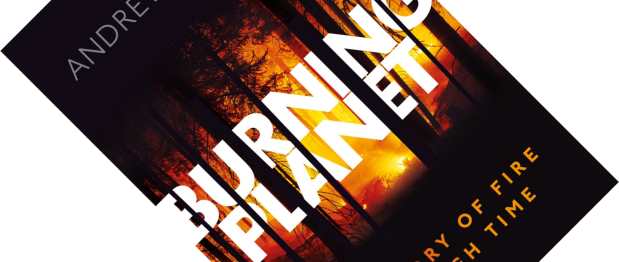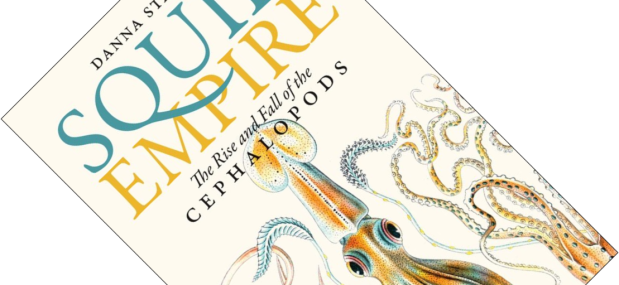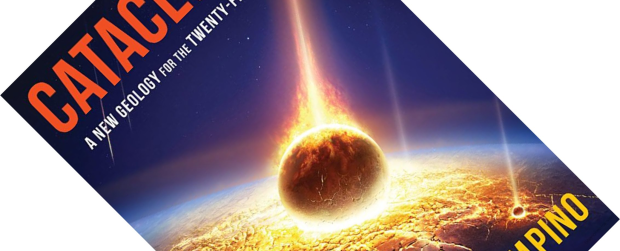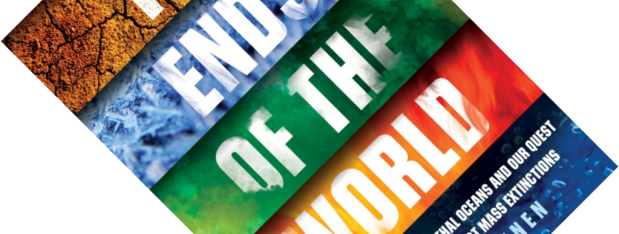This book is an example of what happens when you go down rabbit holes. I have been reading several books on the subject of palaeontology and geology lately, and I know that the face of the earth has shifted over the hundreds of millions of years of deep history covered in these books. But where were all the continents at different times? Many will have seen the iconic maps of the supercontinent Pangaea. But I want to know more. What happened in between? And before? As Nield tells in Supercontinent: 10 Billion Years in the Life of Our Planet, Pangaea was only one of several such supercontinents in Earth’s history. But I want to know more still. Where exactly were the continents located? And how did they move? Several accessible books have provided snapshots of iconic moments, such as the formation of the Himalayas (Mike Searle’s Colliding Continents: A Geological Exploration of the Himalaya, Karakoram, & Tibet) or the disappearance of the Tethys ocean (Dorrik Stow’s Vanished Ocean: How Tethys Reshaped the World). But I want to know more! This technical reference work contains lots of fantastic palaeogeographical maps that answered all my questions.
Cretaceous Period
Book review – Burning Planet: The Story of Fire Through Time
Fire is a force of nature that both fascinates and frightens. Large wildfires around the world seem to be on the rise and are a cause of concern due to the risk to lives and property. But fire also is an essential part of the workings of our planet that pre-dates humans by a long time. How long? For the last 40 years, geologist and palaeobotanist Andrew C. Scott has researched plant remains in the fossil record that have been preserved by fire in the form of fossil charcoal. In Burning Planet, he takes you on a 400-million-year deep-history tour of fire and how it has shaped our planet.
Book review – The Rise and Fall of the Dinosaurs: The Untold Story of a Lost World
Dinosaurs. You could fill a library with the books written about them. Why write another one? Because the field is moving fast: new fossils are constantly being found, new species are being described, and new techniques allow us to ask completely new questions. Being a young career-palaeontologist at the top of your field is another good reason. And Steve Brusatte does not lack ambition. Rather than singling out any one topic, The Rise and Fall of the Dinosaurs gives you the whole epic story, from the early beginnings right up to the abrupt end. Given the brief Brusatte has set himself he obviously doesn’t cover everything exhaustively, but he succeeds admirably in giving you a very relevant overview of where we are now.
Book review – Squid Empire: The Rise and Fall of the Cephalopods
Cephalopods, the group of molluscs that include the octopus, squid, cuttlefish and nautilus, are some of the most fascinating invertebrates to live in the world’s seas. Especially the octopus is famed for its intelligence and mind-bending acrobatics, being able to squeeze through the smallest hole. There have been some fantastic popular books on cephalopods recently, from William’s entertaining Kraken: The Curious, Exciting, and Slightly Disturbing Science of Squid to several works focusing on the octopus (Godfrey-Smith’s Other Minds: The Octopus and the Evolution of Intelligent Life, Montgomery’s touching The Soul of an Octopus: A Surprising Exploration of One of the World’s Most Intriguing Creatures, which made me tear up in more than one place, Mather et al.‘s Octopus: The Ocean’s Intelligent Invertebrate, and Harmon Courage’s Octopus! The Most Mysterious Creature in the Sea). But, as marine biologist Danna Staaf remarks, what’s been missing is a popular book on the evolution of cephalopods. Having been fascinated with them since childhood, she eventually decided to write Squid Empire. All hail the squid!
Book review – Cataclysms: A New Geology for the Twenty-First Century
Was the asteroid impact that caused the extinction of the dinosaurs a one-off? Or are other mass extinctions in earth’s deep history perhaps also linked to impacts of extraterrestrial bodies? Many scientists are reluctant to accept this idea. In Cataclysms, Rampino argues that it is high time to cast off the spirit of Lyell that continues to haunt geological thinking and embrace a new era of catastrophism.
Book review – The Ends of the World: Volcanic Apocalypses, Lethal Oceans and Our Quest to Understand Earth’s Past Mass Extinctions
Aaaah… the Apocalypse. Who doesn’t love Hollywood’s favourite movie trope? The spectacle, the drama, and the foreboding knowledge that – oh, spoilers – everyone dies at the end. There has been no shortage of good eschatological writing in recent years. Some books to come to mind are Erwin’s imaginatively titled Extinction, Wignall’s recent The Worst of Times, or Alvarez’s T. rex and the Crater of Doom – those pesky dinosaurs remain a popular subject. Do we really need another popular science book about mass extinctions? Given the continued developments in our understanding, and given that you get not one, not two, but all five for the price of one, I’d say yes. As far as I can tell the last comparable book was Hallam & Wignall’s 1997 Mass Extinctions and their Aftermath, published by Oxford University Press, which was a more academic treatise. So, get your bucket of popcorn ready and roll on the Apocalypse!






